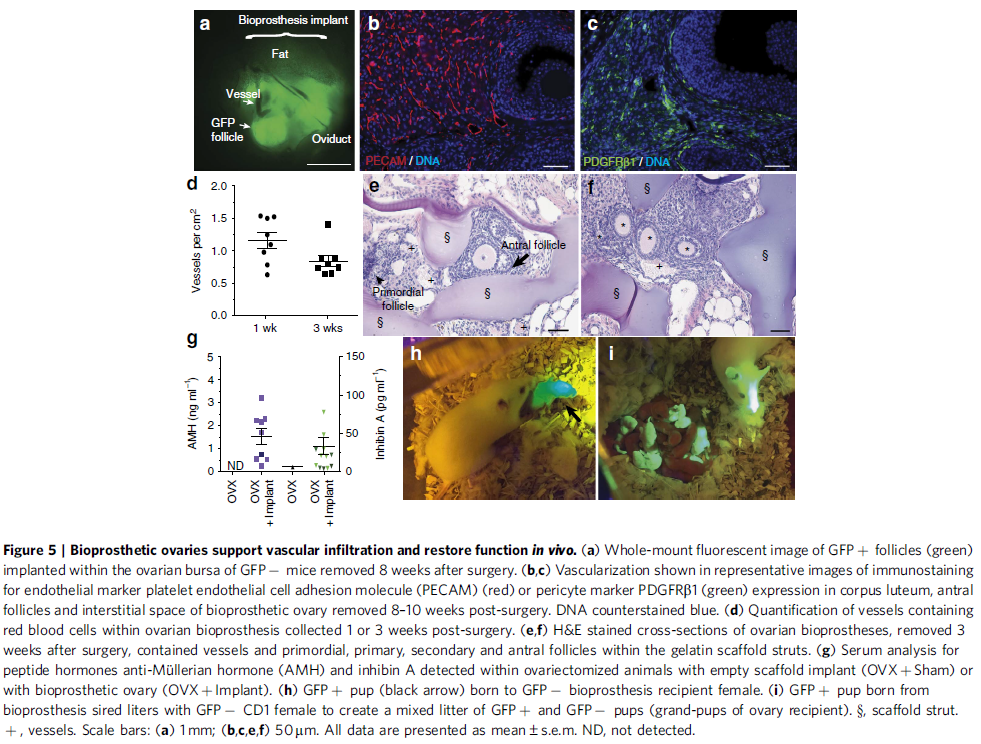博文
3D打印人类卵巢的希望!
||
在女性不孕不育中,卵巢疾病是重要原因之一,在传统治疗方法中比较难以治愈,从而使很多女性失去了当妈妈的机会。而人造卵巢有可能解决女性因为卵巢功能丧失生育这一难题。
近日,NatureCommunications发表了“A bioprosthetic ovary created using 3Dprinted microporous scaffolds restores ovarian function in sterilized mice”的文章,该文章报道了利用全新的3D打印技术打印了可以植入到雌性小鼠体内并能够排卵的卵巢结构,三维打印支架中包含了未成熟的卵细胞。将通过3D打印的卵巢移植到通过手术去掉卵巢的小鼠体内,激素水平得到恢复而重新获得了生育力,最终通过受精最终实现了小鼠的繁殖。该研究为3D打印人类卵巢奠定了基础。



(图片引自论文原文)
论文摘要:Emergingadditive manufacturing techniques enable investigation of the effects of pore geometryon cell behavior and function. Here, we 3D print microporous hydrogel scaffoldsto test how varying pore geometry, accomplished by manipulating the advancingangle between printed layers, affects the survival of ovarian follicles. 30_ and60_ scaffolds provide corners that surround follicles on multiple sides while90_ scaffolds have an open porosity that limits follicle–scaffold interaction.As the amount of scaffold interaction increases, follicle spreading is limitedand survival increases. Follicle seeded scaffolds become highly vascularizedand ovarian function is fully restored when implanted in surgically sterilizedmice. Moreover, pups are born through natural mating and thrive throughmaternal lactation. These findings present an in vivo functional ovarianimplant designed with 3D printing, and indicate that scaffold pore architectureis a critical variable in additively manufactured scaffold design for functionaltissue engineering.
https://m.sciencenet.cn/blog-3319332-1055695.html
上一篇:20170518——球序韭(Allium thunbergii G. Don)
下一篇:落日or日出?